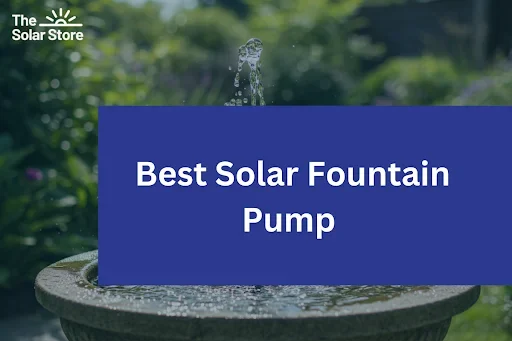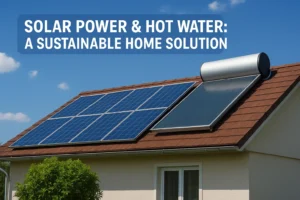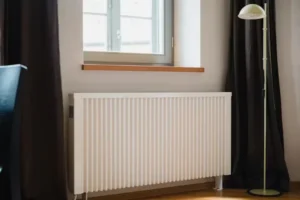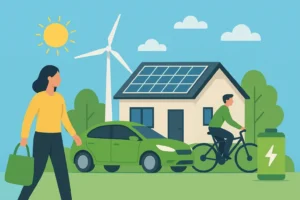Disclaimer: This guide is for informational purposes only and reflects the author’s research and experience with solar fountain pumps. Always consult product specifications and professional advice before making a purchase. We may earn a commission from qualifying purchases, but this does not influence our reviews or recommendations.
Most homeowners purchase fountain pumps based on price and attractive pictures, only to discover that their new fountain lasts only a few weeks before becoming an expensive problem that they cannot just get rid of. They’ll blame cloudy weather or “defective” products without realizing they chose the wrong pump entirely.
Here’s what separates reliable solar pumps from garden center junk: the right pumps match your fountain’s specific requirements, use quality renewable panels that actually charge in partial shade, and include a battery backup for consistent operation. Cheap pumps skip these basics and fail when you need them most.
Suppose you’ve been frustrated by solar pumps that barely work in perfect conditions and quit altogether on cloudy days. In that case, you’re likely making one of three common mistakes that doom most solar water feature projects from the start.
Best Solar Fountain Pumps (Tested in Real Conditions)
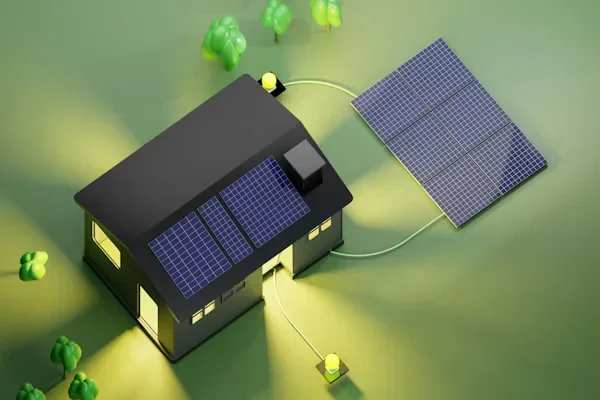
Submersible or external pumps? Which design handles the weather better
Submersible pumps are situated underwater, where they’re protected from weather and temperature extremes. They’re harder to access for maintenance, but they last longer because the water keeps them cool, and debris can’t easily clog the intake.
External pumps offer easier maintenance, as you can access them without draining. However, they’re exposed to freezing temperatures and summer heat, which can shorten their lifespan. For most homeowners, submersible designs provide better long-term reliability.
GPH ratings that actually matter for different fountain sizes
Small bird baths require pumps that deliver 50-100 GPH for gentle water movement. Garden fountains typically require a flow rate of 100-200 GPH for noticeable flow without splashing. Large pond fountains need 200+ GPH to create dramatic water displays.
The industry standard formula: measure your spout diameter and multiply by 100. A 2-inch spout needs at least 200 GPH. However, factor in head height, the vertical distance from the pump to the spout, because it significantly affects performance.
Solar panel quality: Why cheap panels kill pump performance
Quality solar power panels maintain efficiency in partial shade and last for years. Cheap panels from discount retailers often fail within months because they use inferior photovoltaic cells that can’t handle weather exposure.
Look for panels with silicon solar cells and weather-resistant construction. The panel should be separate from the pump, connected by a 10-foot or longer cable, so you can position it for maximum sun exposure while keeping the pump in your water feature.
Solar Fountain Pump Power Requirements (The Math That Matters)
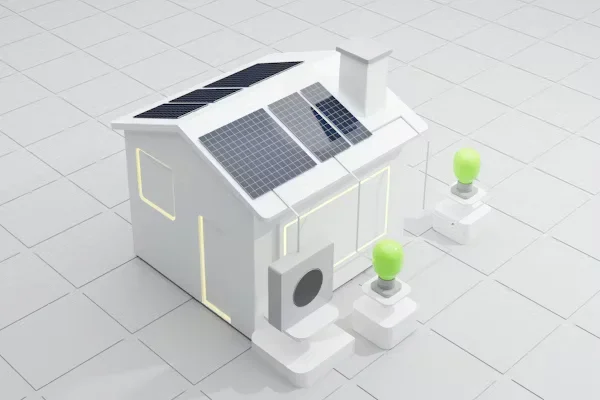
Direct sunlight vs. cloudy days: Battery backup necessity
Without battery backup, the system stops working the moment clouds cover the sun. This creates intermittent operation that’s more annoying than relaxing. Quality systems include backup battery storage that powers the solar unit for several hours after sunset.
Water flow calculations: Matching pump power to fountain height
Head height dramatically affects pump performance. A pump rated for 200 GPH at ground level might only deliver 40 GPH when lifting water 4 feet vertically. Always choose pumps with maximum head ratings of at least 1.5 times your actual fountain height.
For example, if your spout is 24 inches above the solar unit, you need a pump with a minimum head height of at least 36 inches to maintain adequate flow. This ensures strong water flow even as the solar unit ages and efficiency decreases.
Small pond vs. large water features: Sizing pumps correctly
Small fountains (under 50 gallons) work well with 6V pumps delivering 50-150 GPH. Medium water features (50-200 gallons) need 12V systems with 150-300 GPH capacity. Large installations require professional-grade pumps, such as solar-powered pool pump systems, designed for substantial water circulation needs.
Don’t oversize pumps for small spaces – excessive flow creates splashing and noise that defeats the purpose of a peaceful water feature. Match pump capacity to your fountain’s actual needs rather than buying the most powerful option available.
Installation, Setup, and Avoiding Solar Fountain Pump Disasters
Solar panel positioning for maximum daily runtime
Position solar power panels facing south with no shade between 10 AM and 3 PM when solar energy is strongest. Even partial shading from trees or buildings can reduce panel output by 50% or more, causing poor pump performance throughout the day.
Avoid mounting panels flat against surfaces where heat buildup reduces efficiency. Tilted mounts that match your latitude provide optimal year-round performance. Clean panels monthly to remove dust, pollen, and debris that block sunlight from reaching photovoltaic cells.
Water level considerations and pump protection
Maintain water levels 2-3 inches above the pump intake to prevent damage from running dry. Low water levels cause pumps to overheat and burn out within hours. Install automatic float switches if your fountain experiences significant evaporation during hot weather.
Position pumps on stable platforms to prevent tilting or movement that can damage intake screens. Use coarse pre-filters to protect pump impellers from leaves, algae, and debris that commonly clog small pumps during outdoor operation.
According to the International Renewable Energy Agency (IRENA) 2023 cost report, solar technology costs continue to drop significantly, with solar PV costs falling 12% year-on-year and 90% since 2010, making solar water pumping systems increasingly viable for residential applications. During peak summer sun, good renewable panels can power pumps for 8-10 hours daily.
Easy-to-install kits vs. DIY solar pump systems
Complete fountain kits include everything needed for installation, including the solar unit, solar energy panel, battery backup, and connecting cables. These work well for beginners but limit customization options. DIY systems offer more flexibility but require a basic understanding of solar power.
For most homeowners, quality pre-assembled kits provide the best balance of performance and convenience. The Solar Store specializes in complete solar water pumping systems that eliminate guesswork, delivering professional results.
Seasonal considerations: Winter storage and maintenance
Remove pumps and solar energy panels before freezing temperatures to prevent damage from ice expansion. Store components in a dry, temperature-controlled environment during the winter months. Leaving systems outdoors during freeze-thaw cycles can damage pumps and crack solar energy panel housings.
Perform annual maintenance, including impeller cleaning, battery replacement, and inspection of electrical connections. Replace worn components before the next season rather than waiting for complete failure during peak usage periods.
When solar pumps aren’t the right choice
Solar pumps work poorly in heavily shaded locations or areas with limited direct sunlight. Location receives less than 4-6 hours of direct sun daily, consider electric pumps with GFCI protection instead.
Large fountains that require over 400 GPH flow rates often exceed the capabilities of most consumer solar pumps. Commercial applications usually need hardwired electric systems or specialized solar installations with multiple panels and battery banks for reliable operation.
Solar Pumps for Different Applications
- Bird baths and small fountains: Low-power options that work
Small water features need gentle circulation rather than dramatic displays. Look for 6V pumps with 50-100 GPH flow rates that create subtle bubbling effects without overwhelming tiny basins or frightening birds.
Battery backup becomes especially important for bird baths since consistent water movement prevents stagnation and mosquito breeding. Choose pumps with integrated backup batteries that maintain circulation during cloudy periods and overnight hours.
- Garden fountains and pond fountains: Mid-range performance needs
Garden fountains benefit from 12V pumps that deliver 150-300 GPH, providing visible water movement and pleasant sound effects. These pumps can lift water 2-4 feet while maintaining adequate flow for most decorative applications.
For reliable mid-range performance, the Grundfos 6 SQF-2 submersible solar pump delivers consistent flow rates ideal for medium-sized outdoor fountains and garden ponds. This model can lift water from shallow sources while providing the durability needed for year-round outdoor operation with minimal maintenance requirements.
- Large outdoor water features: High-capacity solar solutions
Substantial water features require professional-grade solar pumping systems with multiple panels and battery banks. For impressive water displays, the SCP-115-60-240-BV solar pool pump delivers 115 GPM with a 60-foot head capacity, making it ideal for large fountains, pond aerators, and multi-level features that need serious flow rates.
This brushless DC motor design offers long-term reliability, while the 240V DC operation enables efficient solar panel configurations. These installations often need custom design to balance power requirements with aesthetic considerations and local solar conditions.
FAQ
- Q: How long do pumps typically last?
Quality pumps, with proper maintenance, can last 3-5 years of seasonal use. Cheap pumps often fail within 6 to 12 months. Key factors affecting lifespan include the quality of solar panels, battery backup systems, and protection from freezing temperatures during winter storage.
- Q: Do fountain pumps work on cloudy days?
Solar with battery backup can operate for 2-4 hours on cloudy days using stored energy. Pumps without batteries stop immediately when clouds block the sun. For consistent operation, regardless of weather, choose built-in battery storage systems.
- Q: What GPH rating do I need for my fountain?
Calculate GPH by measuring spout diameter in inches and multiplying by 100. A 1-inch spout requires a minimum of 100 GPH. Also, consider height pumps lose significant flow when lifting water vertically. Select with 1.5 times the head height of your fountain for optimal performance.






